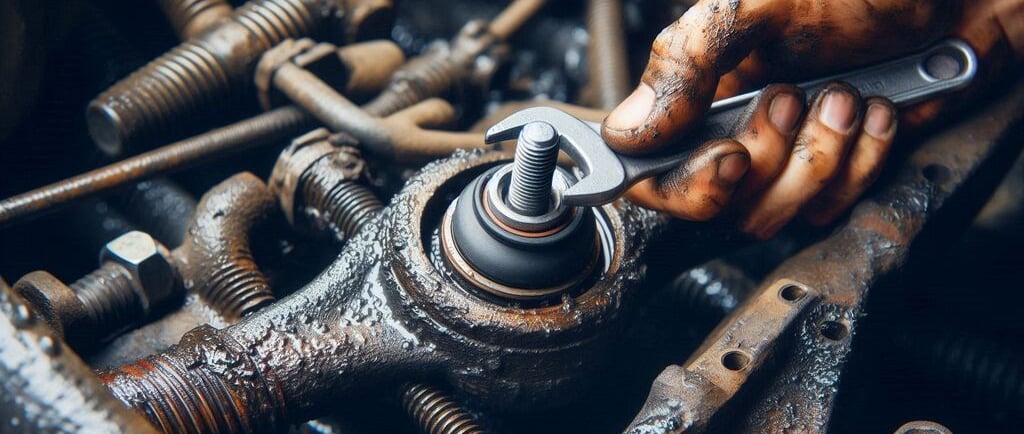Tie Rod Ends
When it comes to your vehicle’s handling and control, tie rod ends are essential components that don’t always get the attention they deserve.
SUSPENSION PARTS
11/14/20244 min read


Understanding Tie Rod Ends: A Crucial Part of Your Vehicle’s Steering System
When it comes to your vehicle’s handling and control, tie rod ends are essential components that don’t always get the attention they deserve. These small but vital parts connect your steering system to the wheels, making sure your vehicle responds smoothly to steering commands. If they’re worn out, it can lead to poor handling, uneven tire wear, and even dangerous driving conditions.
In this article, we’ll dive into what tie rod ends are, how they work, signs of wear, and tips for maintenance to keep your vehicle safe and driving smoothly.
What Are Tie Rod Ends?
Tie rod ends are the small, pivoting ball-and-socket joints that connect your steering rack to the steering knuckle of each wheel. They are a part of the steering system and help transfer the force from your steering wheel to the wheels, allowing you to turn left or right with precision. Each vehicle typically has two tie rod ends—one for each front wheel.
There are generally two types of tie rod ends:
Inner Tie Rod Ends: These connect directly to the steering rack and are located closer to the vehicle's center.
Outer Tie Rod Ends: Located at the end of the steering linkage, these connect to the wheel assembly.
Why Are Tie Rod Ends Important?
Tie rod ends are crucial for the following reasons:
Accurate Steering: They allow for smooth and responsive steering, making your vehicle easier to handle.
Vehicle Stability: Tie rod ends keep the wheels aligned, helping to maintain stability on the road.
Longer Tire Life: By keeping the wheels properly aligned, they prevent uneven tire wear and extend tire life.
Signs of Worn or Damaged Tie Rod Ends
Over time, tie rod ends experience wear and tear, particularly if you often drive on rough terrain. Here are some signs that your tie rod ends might be wearing out:
1. Loose or Unresponsive Steering
If you feel that your steering is looser than usual, or if it’s not as responsive, worn tie rod ends may be to blame. This happens because the tie rod ends can no longer hold the wheels in alignment, affecting steering accuracy.
2. Clunking or Knocking Noises
Worn tie rod ends can make clunking or knocking sounds, especially when turning. This is due to the ball joint in the tie rod end becoming loose or damaged, causing it to move excessively.
3. Uneven or Rapid Tire Wear
If you notice uneven wear on your tires—especially on the inner or outer edges—it could be due to misaligned wheels caused by worn tie rod ends. When tie rod ends are compromised, they can cause the wheels to tilt slightly, resulting in uneven tire wear.
4. Vehicle Pulling to One Side
If your vehicle pulls to one side when you’re driving straight, it may be due to a faulty tie rod end. This misalignment can make it difficult to keep your car straight, impacting both control and safety.
How to Inspect Your Tie Rod Ends
Inspecting tie rod ends regularly is key to ensuring your steering system remains in top shape. Here are two simple ways to check:
Visual Inspection: Look under your vehicle to see if the tie rod ends are loose, bent, or if the rubber boots are cracked or leaking grease.
Manual Check: With the vehicle raised, try to move each front wheel side-to-side. If there’s excessive play, it may indicate worn tie rod ends.
Regular inspections by a professional can help catch issues early before they lead to larger, more expensive repairs.
Maintenance Tips for Tie Rod Ends
To keep your tie rod ends in good condition, follow these maintenance tips:
1. Lubricate Regularly
Some tie rod ends are sealed and pre-lubricated, while others have grease fittings. If yours have fittings, it’s essential to lubricate them during routine maintenance to prevent wear and tear.
2. Avoid Rough Terrain
Frequent driving on rough roads can speed up the wear on tie rod ends. If possible, avoid potholes, unpaved roads, and off-roading to extend their lifespan.
3. Schedule Regular Alignments
Wheel misalignment can put unnecessary strain on your tie rod ends. By having your wheels aligned regularly, you help reduce stress on these components, making them last longer.
Replacing Worn Tie Rod Ends: What You Need to Know
If your tie rod ends are worn out, it’s essential to replace them promptly. Ignoring worn tie rod ends can lead to poor vehicle control and unsafe driving conditions. Here’s what to expect:
Cost: Replacing tie rod ends can range from $100 to $300 per end, depending on your vehicle make and model.
Installation: Replacing a tie rod end generally takes an experienced mechanic around one hour.
After Replacement: Following a tie rod replacement, a wheel alignment is usually necessary to ensure your wheels remain properly aligned.
Replacing tie rod ends promptly not only improves vehicle handling but also helps protect other suspension and steering components.
Conclusion: Maintain Your Tie Rod Ends for a Safe, Smooth Drive
Tie rod ends are an essential part of your vehicle’s steering system, impacting everything from control and safety to tire life. Regularly inspecting and maintaining these components can make a significant difference in your vehicle’s performance, ensuring a safer and smoother ride. By understanding the signs of wear and knowing how to care for your tie rod ends, you’ll be better equipped to keep your car handling well and driving safely.



